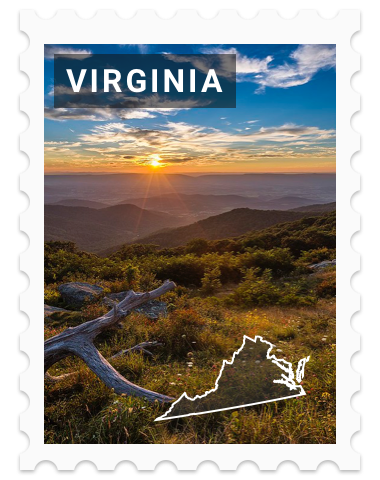Destination List > Colonial National Historical Park
Colonial National Historical Park
Photo by Ken Lund
The history...
Colonial National Historical Park protects and interprets several sites relating to the Colony of Virginia and the history of the United States, ranging from the site of the first landing of the English settlers who would settle at Jamestown, to the battlefields of Yorktown where the British Army was finally defeated in the American Revolutionary War.
Siege of Yorktown
The siege of Yorktown, also known as the Battle of Yorktown, the surrender at Yorktown, or the German battle (from the presence of Germans in all three armies), began on September 28, 1781, and ended on October 19, 1781 with a decisive victory over the British Army.
The combined forces of the American Continental Army troops led by General George Washington and Gilbert du Motier, Marquis de Lafayette, and French Army troops led by Comte de Rochambeau defeared the British Army troops commanded by British Lieutenant General Charles Cornwallis.
The siege proved to be the last major land battle of the American Revolutionary War in the North American region, as the surrender by Cornwallis, and the capture of both him and his army, prompted the British government to negotiate an end to the conflict.
In 1780, about 5,500 French soldiers landed in Rhode Island to help their American allies fight the British troops who controlled New York City.
Following the arrival of dispatches from France that included the possibility of support from the French West Indies fleet of the Comte de Grasse, disagreements arose between Washington and Rochambeau on whether to ask de Grasse for assistance in besieging New York or in military operations against a British army in Virginia. On the advice of Rochambeau, de Grasse informed them of his intent to sail to the Chesapeake Bay, where Cornwallis had taken command of the army. Cornwallis, at first given confusing orders by his superior officer, Henry Clinton, was eventually ordered to build a defensible deep-water port, which he began to do in Yorktown. Cornwallis' movements in Virginia were shadowed by a Continental Army force led by the Marquis de Lafayette.
The French and American armies united north of New York City during the summer of 1781. Both armies began moving south toward Virginia, engaging in tactics of deception to lead the British to believe a siege of New York was planned.
French officer Comte de Grasse sailed from the West Indies and arrived at the Chesapeake Bay at the end of August, bringing additional troops and creating a naval blockade of Yorktown. He was transporting 500,000 silver pesos collected from the citizens of Havana, Cuba, to fund supplies for the siege and payroll for the Continental Army.
In the beginning of September, de Grasse defeated a British fleet led by Sir Thomas Graves that came to relieve Cornwallis at the Battle of the Chesapeake. As a result of this victory, de Grasse blocked any reinforcement or escape by sea for Cornwallis. He also provided the heavy siege guns required by the allied land forces. By late September, Washington and Rochambeau arrived, and the army and naval forces completely surrounded Cornwallis.
After initial preparations, the Americans and French armies began the attack. With the British defense weakened, on October 14, 1781, Washington sent two columns to attack the last major remaining British outer defenses. With these defenses taken, Franco-American bombardment became more intense.
Cornwallis asked for surrender terms on October 17. After two days of negotiation, the surrender ceremony occurred on October 19; Cornwallis was absent from the ceremony. With the capture of more than 7,000 British soldiers, negotiations between the United States and Great Britain began, resulting in the Treaty of Paris of 1783.







